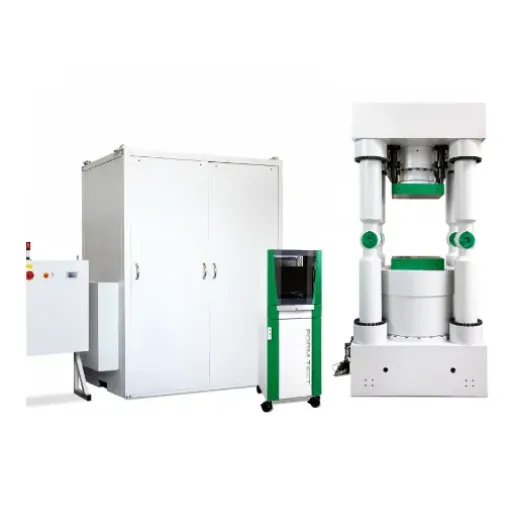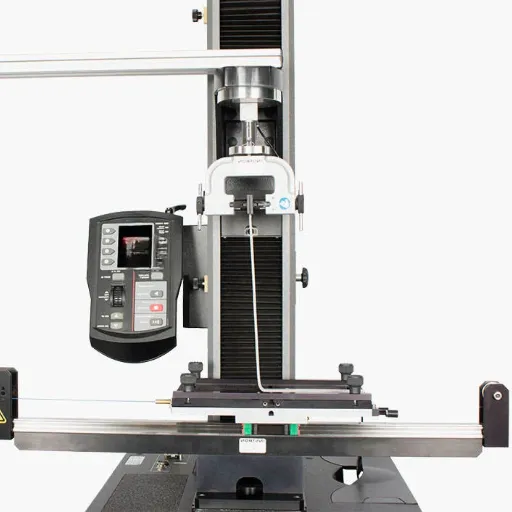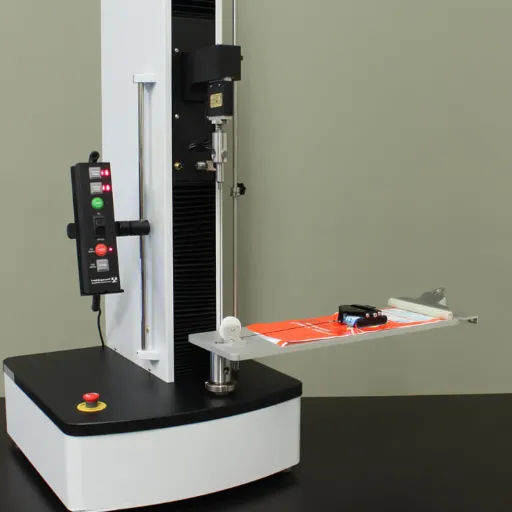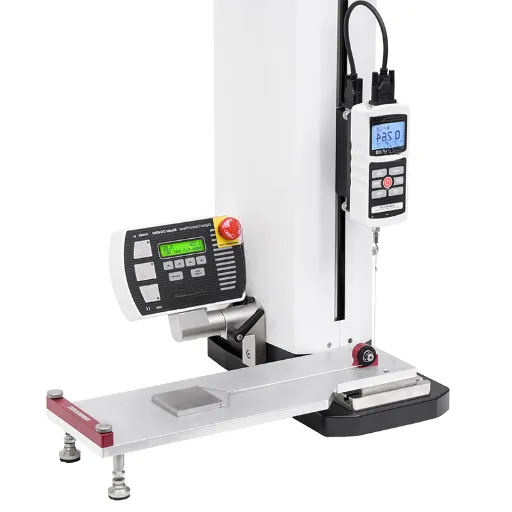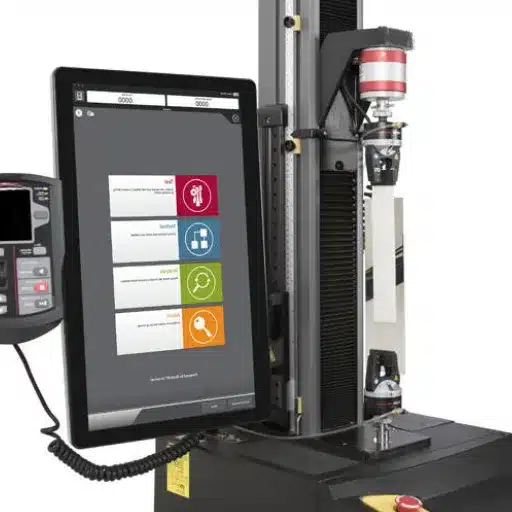When it comes to putting materials to the test in the great outdoors for strength and durability, a compression test machine stands as an indispensable piece of equipment in various industries. Meet people working in construction, manufacturing, or material science; understanding how these machines work and their connection to quality assurance will just set your projects apart. This blog post offers a complete guide to compression test machines, describing what they are for and how they work along with key benefits. Afterward, you’ll be able to understand how these machines foster safety, innovation, and efficient application across innumerable instances. Put yourself in the forefront of learning all about how compression testing is redefining how we determine material behavior!
Understanding Compression Tests
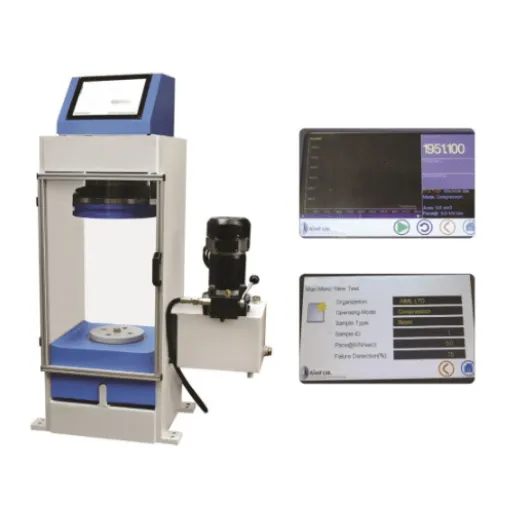
Definition of a Compression Test
In a compression test, a material or component is subjected to crushing forces or pressures of compression. Controlled pressures are exerted on test specimens until they rearrange themselves through deformation or they break; compressive strength is determined among other crucial properties, such as elasticity and durability. Tests such as compressive are useful in assessing the behavior of different materials under mechanical stresses and might help determine their suitability for certain uses.
Wide application areas for compression tests include construction, engineering, and manufacturing. For instance, the concrete should be tested to ensure the concrete supports structural loads efficiently. Plastics or metals are tested to give the best possible designs. These tests give insight into how materials behave in load-bearing situations and thus influence material selection for safety and durability.
Placing precautions on compression testing machines enables operators to make accurate measurements, and results abide by reliability and consistency. The mechanism on which the force is applied is controlled, such as hydraulic and servo-electric ones. These tests measure the resistance of materials against compressive forces, which leads to better designs, improved product quality, and hopefully fewer instances of materials failing in practical use.
Purpose of Compression Testing
It is important that the compressive testing determines material behavior and performance with compressive loading. This testing provides data about strength, deformation, and failure characteristics of materials when compressed. It is vital to verify that a material can be put to any use for particular purposes where it is prevented by any structural criteria.
Compression testing helps design engineers ensure that materials will withstand real-world stresses they will face. By simulating those forces a material will be subjected to when in actual use, this test hence assists in the designing of products, structures, or components that are safer and more efficient. These tests are of paramount importance to construction-automotive-aerospace environments, where a material’s reliability may become an issue in the safety and function of a given system.
In addition, from a quality perspective, these tests ensure that the materials for manufacturing meet the standards and tests they are supposed to meet. It equally plays a critical part in research and development, ensuring the discovery of new materials while working on improving existing materials to good quality. In the end, materials tested in compression ensure products are sturdy and serve well, thereby making them safe for consumers and industries to use.
Importance of Compression Tests in Material Testing
Compression testing machines are essential tools used in material testing to observe and evaluate how materials behave under compressive loads. These machines provide a force to the material sample with increasing pressure until failure occurs or the material deforms. The testing process determines vital properties, including compressive strength, elasticity, or deformation resistance of the material, all of which help in guaranteeing the reliability and safety of a product.
The importance of a compression testing machine extends into various fields, such as civil engineering, automotive, aerospace, and manufacturing industries. In civil engineering, for example, materials such as concrete and steel need to have an adequate compressive strength to bear structural loads, while in compression tests, they are tested for their capacity to withstand the stresses they encounter in real-world applications to ensure that the construction can stand. Likewise, in automotive and aerospace, materials are tested to know whether they can stand compressive forces and engineers can then use these data to design lighter and safer vehicles.
Also, compression testing machines are prime instruments in quality control as well as research and development. By continuously testing materials along the production line, manufacturers are able to spot defects early and maintain standards. On the other hand, R&D uses these machines as a step of trials and tests to develop new materials exhibiting enhanced features. Hence, compression testing machines are highly accurate and highly reliable pieces of equipment and are critically important in modern-day vehicle and industrial applications with regard to both safety and advancement.
Types of Compression Testing Machines
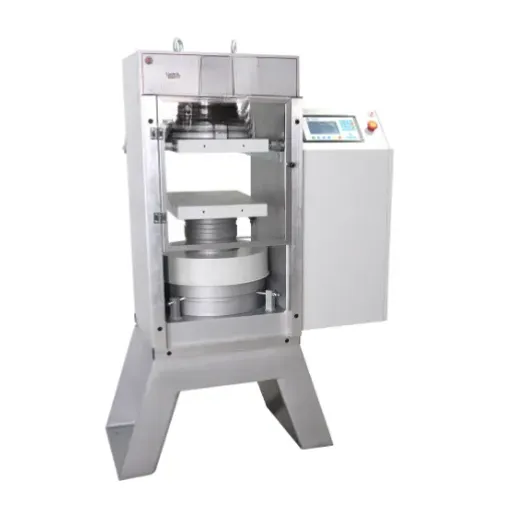
Universal Testing Machines
Universal testing machines are multi-purpose instruments designed for the evaluation of mechanical properties of materials under various types of loads. These machines can test the material for tension, compression, bending, or shear, hence highly useful for a wide variety of applications across industries. They provide accurate results regarding strength, durability, and elasticity of a material, thus ensuring optimum performance and safety standards.
Flexibility is one of the hallmarks of a universal testing machine. They feature interchangeable attachments or grips for various materials and test types. This flexibility lets manufacturers and researchers examine how metals, polymers, composites, and other materials behave under realistic stresses. Tests enable industries in making sure their products comply with standards and can bear the operational stresses.
The second importance of universal testing machines lies in quality control and product development. For quality assurance, they are used to check that raw materials and finished products meet specifications consistently. On the other hand, in product development, the tests are used by engineers and scientists for developing newer materials with greater performance characteristics. With precision, flexibility, and dependability, these universal testing machines are at the heart of engineering and production processes.
Dedicated Compression Test Machines
Compression testing machines inspect the behavior and strength of any kind of material under compressive forces. They apply controlled pressures on the material until it deforms or fails, offering important information about compressive strength, elasticity, and durability. This information finds paramount value in industries that depend on materials that must withstand compressive loads, such as construction, manufacturing, and automotive sectors. These machines, designed solely for compression tests, ensure very high accuracy and reliability. Used to test metals, plastic, concrete, and composites, compression testing machines have found widespread use in various applications. Testing can also tell whether materials conform to a particular industry standard or are worth their salt in a specific application, thereby ensuring safety and performance under real-world conditions.
Dedicated compression testing machines are considered very simple to use and incorporate digital displays along with numerous other advances such as real-time data collection, programming of test parameters, and very precise control of test settings. This ease of use allows for a more meaningful analysis of the test results. These machines are essential in all applications, including quality control, testing, research, and product development, that ensure the safety and performance requirements of materials.
Comparison of Different Types of Compression Machines
Compression machines are categorized mainly by their use, method, and tonnage. The main types include manual, semi-automatic, and fully automatic compression testing machines. Each type has its own features and is employed for varied ends.
| Machine Type | Features | Best For |
|---|---|---|
| Manual | Operator-controlled parameters and loading, cost-effective, simple operation | Small operations, frequent adjustments required |
| Semi-Automatic | Pre-programmed test cycles, some manual setup, balanced approach | Medium-scale operations, moderate automation needs |
| Fully Automatic | Minimal operator intervention, real-time visualization, digital interface | Laboratories, consistent results, high-volume testing |
For instance, manual compression machines need an operator to set the parameters and loading. These can be cheap and easy in use and may be preferred for smaller operations or where frequent adjustments are necessary. They do not, however, have the precision and speed of automatic systems and so may introduce variable results when great number testing is required.
Semi-automatic compression machines are a perfect compromise between manual and fully automatic machines. They provide some options for automation, such as pre-programmed test cycles, while still requiring some manual setup of the test. In contrast, fully automatic machines demand little to no operator intervention, providing real-time visualization, precise load application, and a digital interface, thus being perfect for laboratories and industries that require consistent test results with negligible repeatability errors.
How to Perform a Compression Test
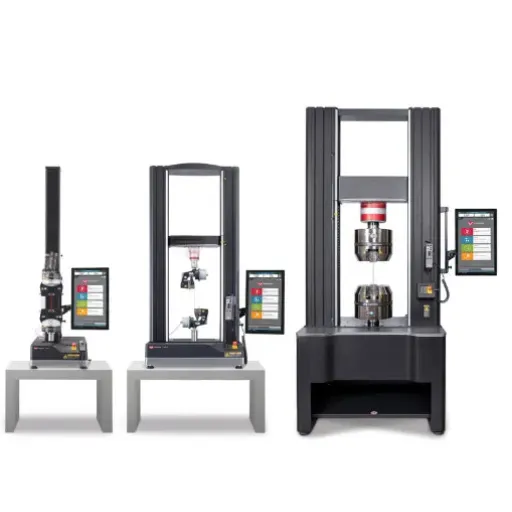
Preparation for Testing
Before the actual compression test is conducted, it is necessary that both the original machine and the specimen be prepared for the particular test. Initially, ensure that the compression testing machine is correctly calibrated and in working order. This is because occasional intercalibration provides the only accuracy and reliability of test results. Check the components of the machine, such as the loading plates and the sensors, to verify they are dust-free, free from damage, and have their alignment correct.
Key Preparation Steps:
- Calibrate the compression testing machine
- Check loading plates and sensors for damage
- Verify component alignment
- Prepare specimen according to standards
- Ensure flat and parallel surfaces
- Mark measurement areas if necessary
Prepare the example or the test specimen in accordance with standards, which may necessitate raw material quality, shape, or dimensions for testing purposes. Whether the specimen surface will allow force application and measurement in an accurate manner, those surfaces should be flat and parallel to each other. Identify crucial areas needed for measurement at instances such as failure or deformation zones by careful marking on the specimen, if necessary.
Setting up the specimen on the compression testing machine is the last step for specimen preparation. Confirm the specimen is aligned centrally between the plates to avoid unequal application of forces which may lead either to inaccurate results or to premature failure. Finalize with a check on machine settings for loads or speed set against the test requirements. Upon fulfilling all, the system is ready to begin the compression test, and hence accurate data will be taken.
Using Test Fixtures
Test fixtures are important for providing reliable and accurate results in a compression test. These must effectively hold the specimen in position so that it does not slip out during the application of force and can help maintain proper alignment of the test specimen. If the fixtures used are misaligned or unstable, inappropriate loading may cause erroneous measurement or premature failure of the specimen, making the test invalid. It is quite important that fixtures used are similar to the specimens in dimension and in shape to apply the force uniformly.
Before the start of any test, check the condition of the test fixtures for any wear, damage, or debris. The damaged ones may block the application of force and provide misleading test results. Maintenance and cleaning of these fixtures are highly recommended to ensure the reliability and consistency of testing. The fixtures should be fixed very firmly on the machine to preclude any movement or instability while in operation.
Lastly, the type of fixture chosen will be determined by the material and test specification. Some materials may require special fixtures, such as those with padding or particular surface textures, to avoid that cause specimen stress concentrations or otherwise change the behavior of the specimen. Operators need to be well-trained in both the alignment and the use of these fixtures to enhance the accuracy and speed of compression tests and reduce the risk of apparatus damage or erroneous results.
Interpreting Test Results
An excellent compression test setup can determine material properties like strength, modulus, and deformation under load. Often considered the key outcome of a compression test is the stress-strain curve, which dictates the behavior of materials under compressive forces. Operators can utilize this curve to assess if the material adheres to performance parameters considered essential for its intended use.
Understanding the results depends immensely on identifying critical points on a stress-strain curve, which include yield strength, ultimate strength, and failure (if it exists). Yielding signifies when the material has started to deform plastically, while ultimate compressive strength refers to the finest load the engaged material can carry without breaking. These parameter values invariably serve design purposes to ensure it can carry the imposed stresses due to service.
In this stage, things like specimen preparation and testing conditions should be given much consideration since their influence directly affects the acceptability of the results. All these have got to do with environmental, for instance, temperature and humidity might influence the material performance while testing. Therefore, ensuring consistency in testing conditions and rigorous respect for standardized procedures is crucial to yielding credible and reproducible results.
Applications of Compression Testing Machines
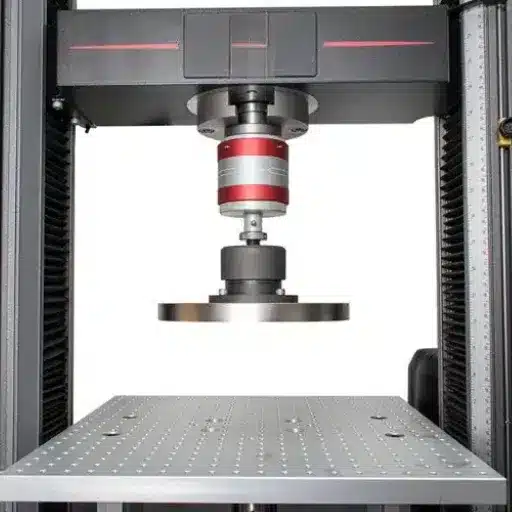
Industries Utilizing Compression Testing
Since these machines measure materials’ strength, durability, and compression resistance, these are required in almost every industry. The construction industry holds utmost importance, where these machines test building materials comprising concrete, bricks, and cement. Once loads are placed on materials, such tests validate the safety of the structures and ensure all industry standards are met.
Construction Industry
Tests concrete, bricks, cement for structural safety and industry compliance
Automotive Sector
Tests gaskets, seals, engine components for pressure resistance
Packaging Industry
Tests cardboard, foam, plastics for stacking and transport durability
The automotive sector is also a core user of compression testing machines. These machines test the compression resistance of gaskets, seals, and components of the engines to ensure that they can sustain the systems of pressures they will face in operation. A major concern for safety and performance, especially in mainstream motorsports where high-performance parts become critical, is very much dependent on such strength tests.
Yet another significant application is in packaging. Materials such as cardboard, foam, and plastic for packaging are subjected to compression tests. This helps ensure that boxes and containers can handle being stacked and transported without the package collapsing or damaging the contents. In this way, compression testing offers a large contribution to safety, innovation, and quality assurance across areas.
Quality Control in Construction and Manufacturing
These machines placed a crucial role in guaranteeing the quality and reliability of the materials used in construction and manufacturing. Compression testing machines test the ability of materials to resist forces that tend to compress them, thereby deforming or failing. They press materials, whether concrete, metals, or plastics, with a force that builds until the specimen fails, recording the maximum load that the specimen can sustain. Good records such as these confirm whether the material meets safety standards and can be used in the field for which it was tested.
In construction work, a compression test for concrete and steel works holds more significance. These materials are usually involved heavily in carrying loads in structures, so their strength must be ascertained to avoid failure. For example, the concrete sample is tested after curing to verify that it achieved the specified compressive strength. Metals for load-bearing components are tested for resistance and safety under pressure. The process serves to lessen hazards arising from structural feebleness, thereby adding to overall project safety.
In manufacturing industries, compression testing ensures that the highest standards are maintained. From testing automotive parts for lasting qualities to packaging materials for strength, compression tests find relevance in diverse applications. The outcomes of these tests enable manufacturers to optimize material usage, improve designs, and produce products that conform to standards within the industry. By using compression tests in their quality assurance programs, both manufacturers and those in construction ensure that materials work faithfully in actual situations.
Research and Development in Materials Science
In materials science, it is of utmost importance to inquire about the testing of strength and durability of materials under compressive force. The testing machinery produces pressure, thereby deforming the materials or causing failure, with the measurements being recorded under load. These data enhance the knowledge of material behavior and safety and quality standards must be met. Testing materials may include metals, plastics, wood, concrete, or composites, while the applications of these machines envelop construction, aerospace, and manufacturing industries.
Usually, it involves putting the sample between two plates and applying force to it until it yields or breaks. In this case, the strength of the material, elasticity, and points of failure are determined. Today, some technological features can be found in modern compression testing machines, such as a digital data acquisition system for precise measurement and thorough analysis. These machines can be altered in size, force range, and conditions for conducting tests based on specific research requirements.
Compression is essential for furthering materials science and engineering. Data gained from here are used in designing safer structures, manufacturing processes, and new materials. Results of compression testing can be used by researchers to enhance their efforts to optimize material composition or identify design weaknesses of a prototype to ensure that the product can stand variable stresses and last longer in real-life applications. Industries, instilling new ideas, continue to provide compression testing machine-enabled materials to meet the ever-increasing demands for stronger and more sustainable materials.
Advantages of Using Compression Testing Equipment
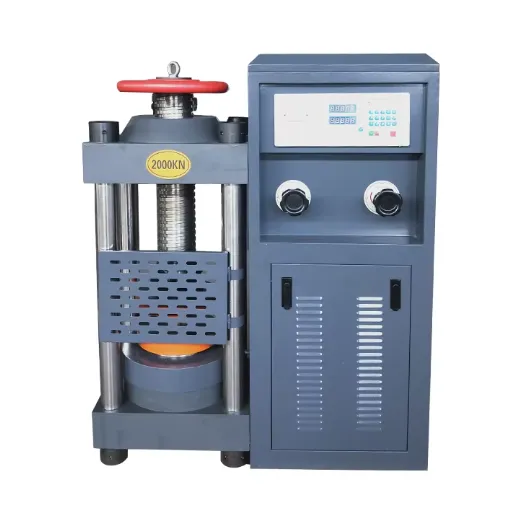
Accuracy and Reliability
One of the advantages of compression testing equipment is their ability to highly accurately determine the material properties of the test sample. A compressive force is applied during the testing process, so these machines are correctly controlling and measuring load values. With this accuracy, the test data can best serve the purpose of further assessing materials in terms of their strength, durability, and structural usefulness, and upon such data, researchers/engineers can make a well-informed decision for the viability of materials in various applications.
Reliability is one more advantage of compression test equipment. They vary in size and strength but are most always highly reliable, providing consistent service independent of operator use or frequency of use. Industries such as construction, manufacture, and aerospace require that the materials should comply with strict safety and performance standards, meaning the consistency of testing would be an important factor to consider for compliance testing. Certification through the compression test guarantees that the materials meet these standards.
Another of the great traits these machines boast is being sturdy and efficient; this ensures a much higher level of trustworthiness. They can withstand harsh treatment and switching of test program requirements, allowing it to be used across a wide range of industries. Thus, in making products better and safer, and this life of organizations and research into materials development, it is of great importance that these machines are accurate and reliable.
Efficiency in Material Testing
Compression testing machines are very important with respect to mechanical properties testing of materials concerning responses under compressive forces. They test to see how a material reacts when forces compress or crush it. Such necessary information encompasses compressive strength, deformation, and elasticity, amongst others, which are used to determine whether a material fulfills the criteria of strength and safety.
It is considered the efficacy of the compression testing machine to give precise and consistent results. Such an efficient system employs advanced control systems plus precision sensors for ensuring that measurement during the testing is accurate. They accommodate testing of materials ranging from metals and plastics to construction materials, such as concrete and wood. Such a great variety has made them indispensable for the construction, manufacturing, and aerospace industries, where material performance could critically influence safety and durability.
They speed up material testing, too, by way of dependable compression-testing machines. They minimize down time and allow for increased speed in testing procedures, some attributes that come along with being sturdily constructed and easy to operate. All these attributes combined assure the data generated adheres to international standards and is reliable for comparison in different applications. Such qualities, plus precision, and the ability to undertake quick testing, make compression testing machines important.provide assurance towards quality and integrity of materials every industry.
Versatility of Testing Equipment
Compression testing machines are crucial for many industries as these machines serve to measure the strength of materials, test their durability, or estimate their performance under varying conditions. They are machines for testing everything: metals, plastics, concrete, composites, etc. to make certain the materials meet requisite safety and quality standards. Because of this flexibility, they find application in construction, aerospace, automobile, and manufacturing industries.
Key Versatility Features:
- Multiple test types: compressive strength, crushing resistance, deformation analysis
- Interchangeable fixtures for various applications
- Compliance with international testing standards
- Support for experimental materials and designs
One obvious advantage of such testing machines is that they can perform several types of tests, including compressive strength, crushing resistance, and deformation analysis of materials. One of the reasons for the versatility of these machines lies in how industries use them to check that a material can withstand certain stresses or loads for better product development and safety. Besides, the testing equipment may provide different setting options and interchangeable fixtures that increase the range of applications.
Another matter of importance is their pertinence to compliance with international testing standards. With the ability to produce dependable and accurate test results subject to full repeatability, these test systems help industries meet the ever-intensifying regulatory standards. The reliability ensures that materials adhere to standby quality, thus supporting innovation as manufacturers take into experimental phase newer materials and designs. Overall, the versatility of the machine makes it indispensable in ensuring material integrity and performance in countless applications.
Frequently Asked Questions (FAQ)
What is a compression testing machine?
A compression testing machine is a device used to subject materials to compression tests for measuring their compressive strengths. This machine is significant in the field of materials testing when there is a need to know the load-bearing capacities of materials such as concrete and metals.
How does a compression test work?
Compression testing applies a load of a chosen rate on a test specimen and continues to do so until it fails or deforms. Force is measured by the machine, enabling engineers to find out the compressive strength of the material under question. This assists in studying the behavior of materials under real load applications.
What materials can be tested in compression using a compression testing machine?
Compression testing machines are used for compressing and testing metals, concrete, plastics, and composites. Each material might have to undergo tests set with specific parameters to accurately measure the compressive strength thereof.
What is the significance of compressive strength in construction?
Compressive strength is widely used in construction as it defines how well a material can withstand loading towards its axis. For instance, knowing the compressive strength of concrete is essential to the engineer in ensuring that buildings and structures are capable of safely carrying the imposed loads.
Can compression testing machines do tensile testing?
In general, compression testing machines are used for performing compression tests only; some of the universal testing machines, however, can also run tensile testing, providing greater test scope on the mechanical properties of a material.
What is a load cell in the compression testing machine?
A load cell is the measuring element, which records the force exerted in a compression testing machine. The force value is used to calculate the specimen’s compressive strength.
What are the standards followed for compression tests?
Compression testing is executed according to certain standards and draws reliability as well as accuracy to its result. These standards lay down the method and the equipment specifications, which should be followed in performing a compression test to have standard values accepted throughout the industry.
What purpose does testing software serve in compression testing?
The testing software is used for analyzing and recording test data. It assists with result visualization, producing reports, and verifying that the test procedures conform to specified requirements and standards.
How does one choose the right compression testing machine?
Choosing the right compression testing machine depends on the options available regarding items to be tested, what load it must bear, and whether it must suit some other purpose such as tensile testing, etc. Reference to industry standards and a defined test requirement is of help when deciding for a certain test machine.
References
-
Compression Testing Machine and Its Uses – Heicoin
Explains what a compression testing machine is and its applications in testing material quality.What is Compression Testing Machine (CTM)? – Aimil
Provides an overview of CTMs and their role in measuring the compressive strength of materials.Compression Test: Definition, Purpose, Applications – Xometry
Discusses the purpose and applications of compression tests, including the use of CTMs.Guide to Compression Testing Machines: Types, Applications – Heicoin
Offers a detailed guide on CTMs, their types, applications, and best practices.

